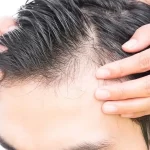There are disproportionately high rates of depression, other mental illnesses, and suicide among Tribal adolescents because of the persecution of American Indians and Alaska Natives and the associated intergenerational trauma (sometimes called historical trauma) and unfavorable childhood experiences. Studies have demonstrated that culturally relevant interventions may help prevent teenage suicide by capitalizing on the qualities already present in Tribal communities.
Native Americans make up less than 2% of the US population but 8% of the homeless population; according to Native American mental health statistics, as much as 70% of these people will suffer from some type of mental health condition at some point in their lives. That’s over 45,000 Native Americans without a house and another 4 million dealing with mental illness, all living their own unique lives every day. There is a high prevalence of mental health and drug addiction issues among indigenous depression in native Americans because of the generational trauma they have experienced as a consequence of being uprooted from their country, robbed of their resources, and bereft of much of their culture. Analyzing data on Native American mental health makes obvious the profound effect that mental illness has had on this underrepresented group. Unfortunately, minorities’ mental health is often disregarded.
When compared to the general population, Native Americans had 1.5 times the rate of major psychological discomfort.
It is estimated that about twice as many Native Americans suffer from PTSD as the general population.
Suicide rates among blacks are comparable to those among whites as a whole, however, there are considerable disparities in suicide rates across different age groups. While suicide ranks as the second highest cause of mortality for those aged 10 to 34, it is much lower for those 75 and over in Native American communities.
It would indicate that depression in native Americans utilizes complementary and alternative medicine at rates comparable to or higher than those of whites. Studies have shown that Native American men and women who match the diagnostic criteria for depression, anxiety, or drug addiction problems are far more likely to seek care from a spiritual healer than from specialists or other medical sources.
Since many Native Americans live in extreme poverty, they often cannot afford medical care despite needing it.
Only a third of Native Americans (33%), compared to about 8% of whites, do not have health insurance. Roughly half (57%) of Native Americans use the Indian Health Service for medical assistance.











